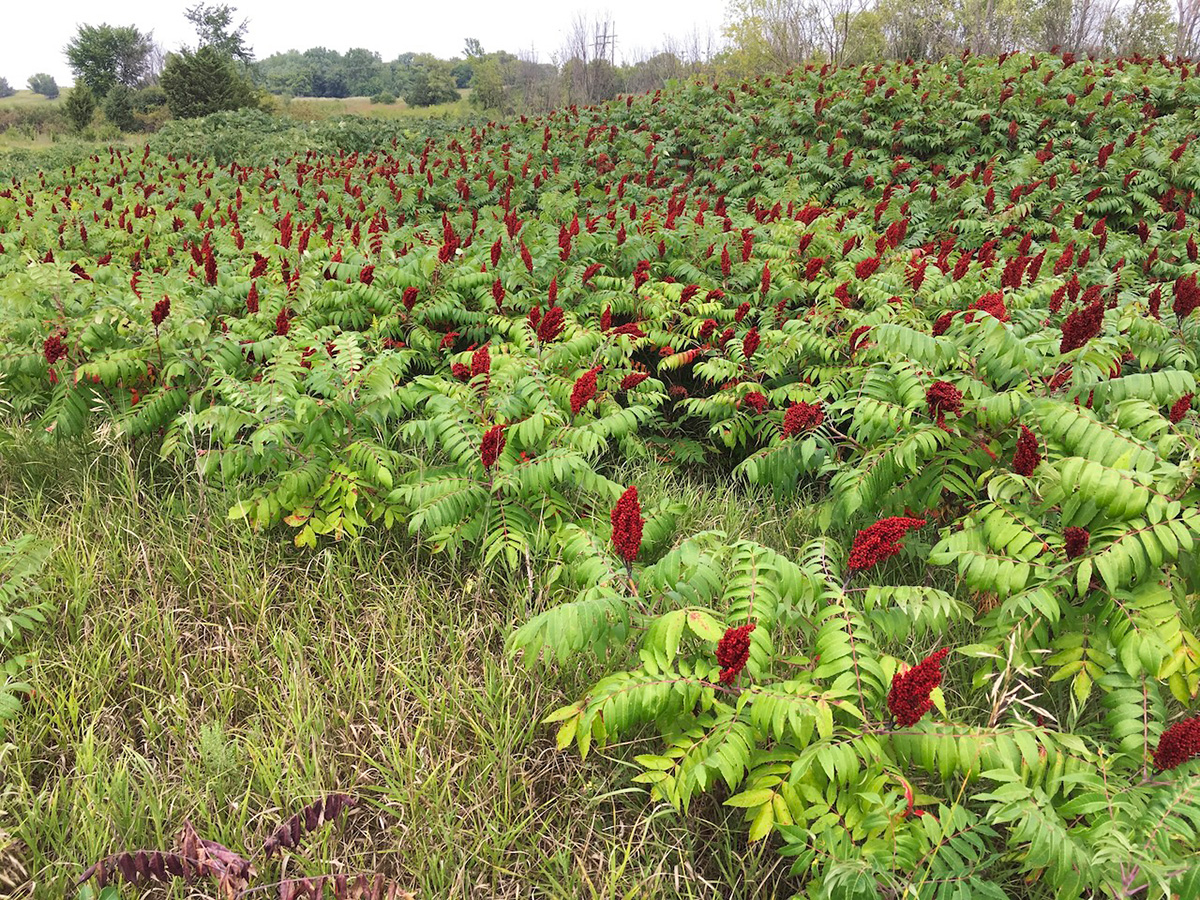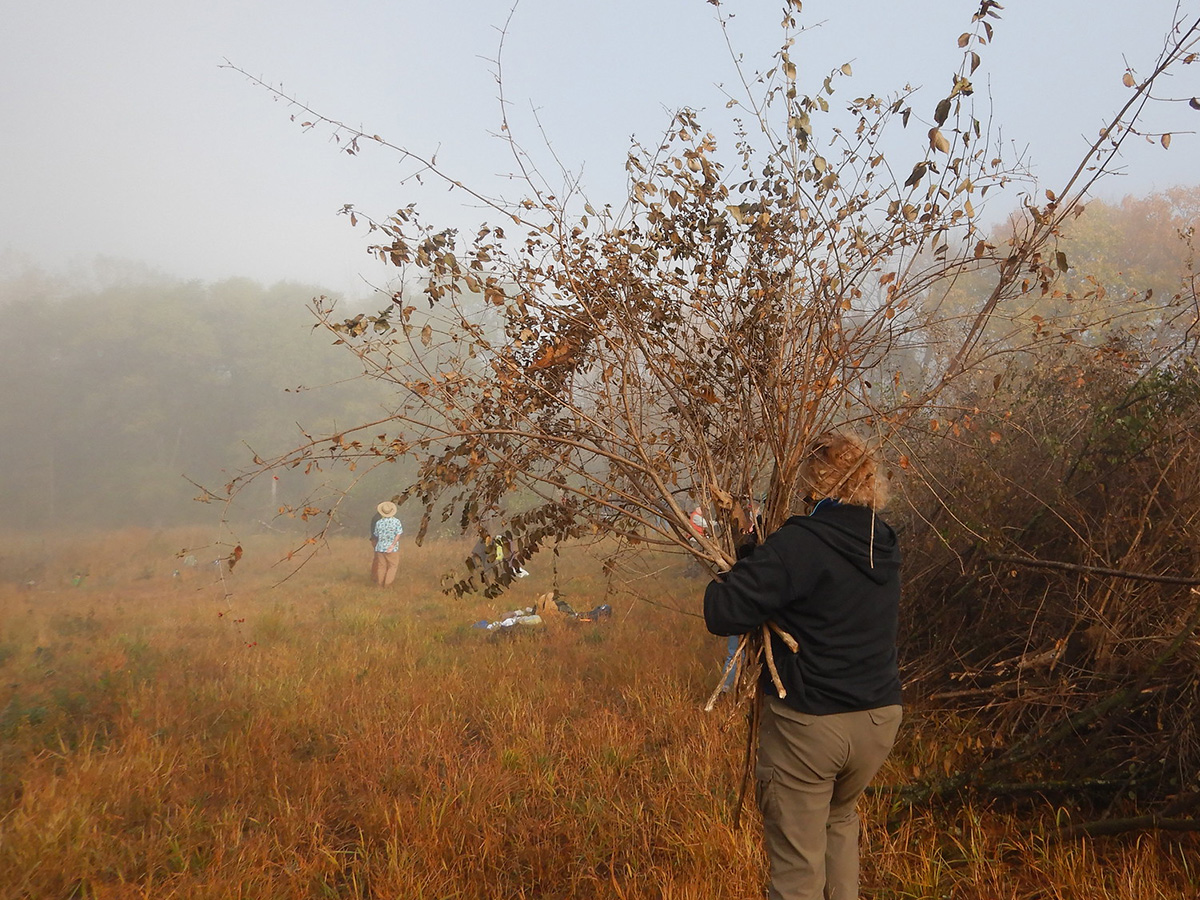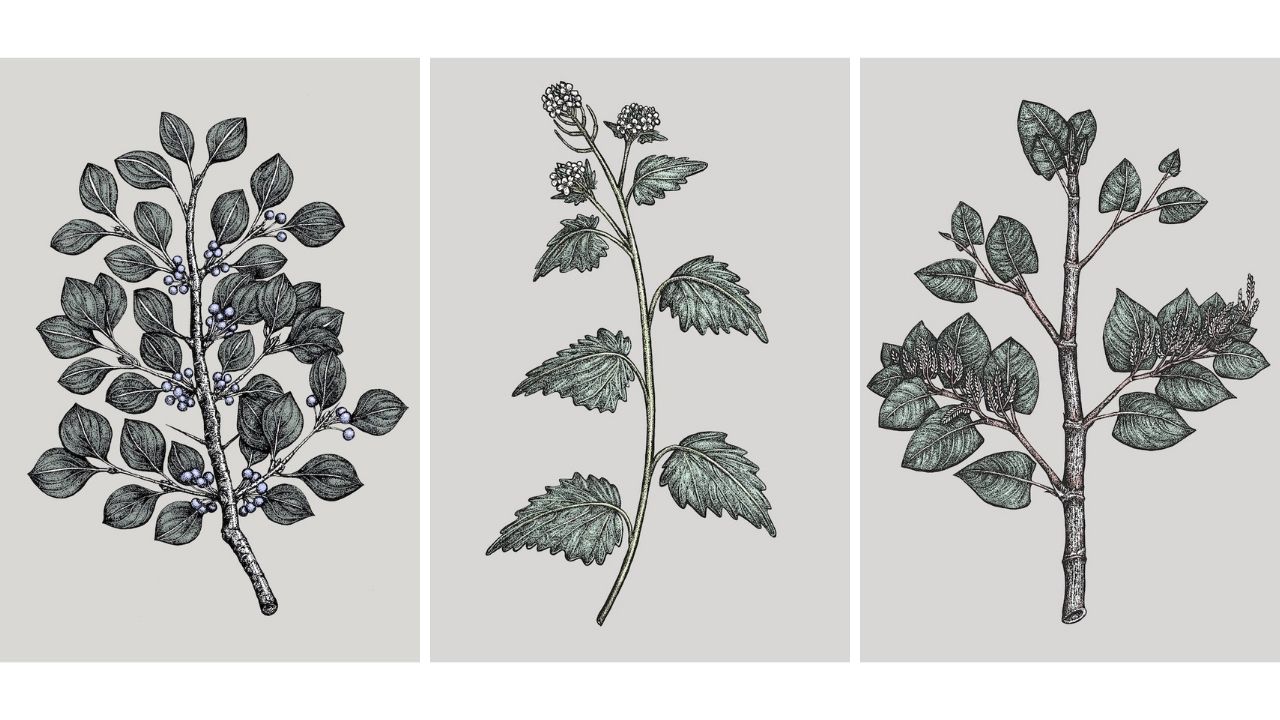"Is it good or bad?" Rethinking language around invasive species
FMR volunteer Kimberly Boustead's artist prints encourage learning and action — but not animosity — around invasive species. (Print sales help support FMR!)
When we talk about invasive species, we're talking about living beings. You wouldn't be able to tell that from the negative and sometimes violent language our field often uses to describe them.
But in recent years, thanks in part to learning from our partners at local Indigenous organizations, we've been revising how we talk about invasive species — and in turn, how we think about our relationship with the living world around us.
We should note that Minnesota state statute defines an invasive species as one that causes or may cause economic or environmental harm or harm to human health, or threatens or may threaten natural resources or the use of natural resources in the state. Minnesota creates this list of regulated species that are prohibited (e.g. spotted knapweed, flowering rush) or have other restrictions.
For ecological purposes, the term "invasive species" refers to a species with the tendency to become overabundant and displace other species. We focus on removing invasive plants at our restoration sites because we hope to encourage the growth of a diversity of plants — plants that help hold soil in place, plants where birds nest, plants that make up vibrant habitat.
Overgrowth of invasive plants can cause habitat breakdown, elimination of important food and nesting resources for wildlife, erosion of soil into waterways, the spread of plant diseases and more.
But even so, we think it's important to show more respect for the plants and animals themselves. Here's why how we talk about invasive species matters.
"Non-native" and "invasive" aren't the same thing
First, some myth-busting. Many introduced species aren't invasive in the climates and ecosystems they come from. When people introduce them to new lands, some constraints, like disease and predators, may be absent, enabling the plant to easily spread. But there's a popular belief that only "non-native" plants are invasive.
A plant's origin doesn't determine whether or not it acts invasively. "Invasive" refers to a behavior or impact, not a place of origin or an identity.
In fact, some introduced species can be harmless or even beneficial to an ecosystem and to us. Think crops, for example. Or garden plants like tulips and hyacinth. Even Dutch clover — abundant, especially in lawns — rarely displaces native plants and provides nectar for bees and other early-season pollinators. However, just because harmful effects of a plant are not currently known doesn't mean that a plant is benign. Dandelion, for instance, lacks amino acids and nutrients that native bees need, so they are not an optimal food source.
Many native species can spread rapidly too, or be invasive, under the right conditions.
Smooth sumac, a shrub native to Minnesota, can become overabundant and invasive in prairie ecosystems. Without fire and grazing, two of the disturbances that historically maintained prairies, sumac's fast growth rate allows it to outcompete many of the shorter-statured and slow-growing prairie plants. Eventually sumac can shade out grasses and wildflowers and form a monocultural shrubland, which means less prairie habitat for wildlife and clean-water benefits for the river.

Smooth sumac is a beautiful plant native to Minnesota, but its spread into prairies can displace that habitat.
The term "non-native" isn't synonymous with "invasive." That truth — that not all non-native or introduced plants are harmful to an ecosystem, and not all native plants are beneficial in every environment or situation — is important to remember. Breaking down unmerited and automatic categorization of plants helps us see more clearly what's really happening in a particular ecosystem. That allows us in turn to be more responsive in our restoration efforts.
The species isn't bad, but its impact on ecological health might be
At events we're often asked, "Is this plant good or bad?"
We get that. If you're trying to figure out which plant to pull and which to leave, you need to know which we hope to encourage and which we're removing. But to that particular question, our answer is more nuanced: There are no bad plants. All plants are part of nature, just going about trying to survive, like everyone else.
Even plants that are invasive in a particular place can have important ecological functions. Smooth sumac, for example, provides food for dozens of bird species, deer and other grazers, and is used by many butterflies. But without those natural disturbances mentioned above, sumac can start to turn a prairie into a thicket.
Still, most of the plants we refer to as invasive are also not native to our area, and they tend to have fewer redeeming ecological qualities in their invasive range. Many do provide nectar, forage, cover and other functions. But the nectar and berries tend to be of lesser nutritional value than their native counterparts. Buckthorn and Tatarian honeysuckle are examples of this. Their low-nutrient berries can actually hamper bird migration.
A few of these plants in the landscape would not be a problem. But a landscape made up of only these species can mean reduced habitat quality.
Ultimately when a species spreads rapidly and prevents other plants from growing, it reduces the overall plant diversity in a specific area. Reduced plant diversity leads to reduced wildlife habitat and can also increase soil erosion and facilitate more invasive species.
Learning from our Indigenous partners
While we still want to decrease the impact that rapid spread of one species can have on the greater whole of an ecosystem — including water quality — we're getting more precise and thoughtful with our language.
We've been inspired by our conversations in recent years with our partners at Wakaŋ Tipi Awaŋyaŋkapi and other Indigenous-led organizations.
It's changed our thinking to consider that plants we've called "invasive species," our partners call displaced plant relatives. Through the lens that all beings are kin, no plants are "invaders" — kinship does not hinge upon a species’ area of origin or whether they were "introduced."
We appreciate these perspectives as they help us to think more critically about how we manage natural areas and the choices that we make.
 At events that focus on invasive species removal, we'll remind ourselves and our volunteers that these are just plants out of place and that we remove them to balance the thriving of a diverse whole.
At events that focus on invasive species removal, we'll remind ourselves and our volunteers that these are just plants out of place and that we remove them to balance the thriving of a diverse whole.
How (and why) the field of ecology is evolving
We hope partnerships and perspectives like these can continue to inform and evolve ecological restoration practices and approaches. We've already seen some change.
Early on in the field of invasion biology, you might have encountered terms like "exotic" and "alien" referring to a species' origin. Both are less frequently used now than they were in the past, a welcome change since those terms often paralleled racist and anti-immigration sentiments.
The names with which we refer to specific species can also be harmful, associating a species and an "anti" sentiment about a specific group of people. For example the term "Asian carp" carries a negative association between the invasive behavior and place of origin of this species. We've joined others in referring to them by their specific species name (grass carp, silver carp, etc.) or simply by the grouping "invasive carp." Moving away from terms like this or using specific names can lessen the negative impacts these names once had.
Similarly, "spongy moth" is the new common name for an increasingly common invasive moth, replacing the older and more offensive "Gypsy moth" moniker. Organizations like the Better Common Names Project are leading the charge in identifying problematic species names and pushing for change.
The field is also moving away from militaristic language surrounding invasive species removal and toward language that acknowledges the intricate relationships between all species.
As an ever-evolving discipline, the field of restoration relies on the principle of adaptive management. This means that we can be responsive to unexpected restoration outcomes by changing our methods or trying new techniques. To carry out that principle, we strive to be adaptive when it comes to changes implemented by our partners and the larger field of ecology. Changing the way we talk about these topics is no different. Thoughtful language makes our field stronger, more open and welcoming.
Invasive species removal and ecosystem restoration are still vital ways that we can heal our relationship with the earth. Changing how we talk about these plants and animals encourages us to look deeper into those relationships. Plants can't be categorized simply as "good" or "bad." When we use more precise and meaningful language, we remind ourselves of the respect all species deserve.
Learn more
Here are a few essays we've appreciated on these themes:
• Wakaŋ Tipi Awaŋyaŋkapi on plant relatives
• Wakaŋ Tipi Awaŋyaŋkapi on Indigenous science
• Robin Wall Kimmerer on the power of language and the grammar of animacy
• Jessica Hernandez on the difference between caring for and conservation of land
• The Smithsonian Magazine on rethinking how we talk about invasive species
